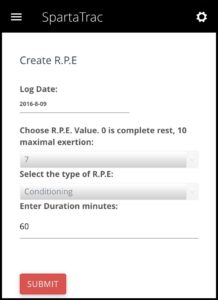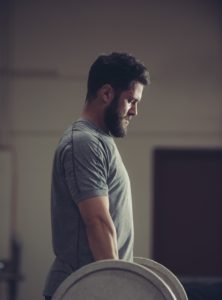
A relatively common occurrence we have here at Sparta is an athlete or parent calling us to cancel or reschedule a training session. After a long tournament weekend or a tough three weeks of training, there often comes the time when the accumulation of stress reaches a threshold. These athletes feel their time may be better served “recovering” with some time off. While their intuition isn’t exactly wrong, rather than completely skipping a training session, we can simply adjust intensities so what was on paper as a challenging training session instead becomes purposeful active recovery.
This concept is often termed a “deload”, and is programmed into an athlete or team’s training calendar. The biggest challenge of using a pre-programmed deload is knowing when and where to put it. An athlete’s response to stimulus will always be somewhat unique: based on training history, previous injury, genetics, and (especially) other outside stressors such as travel, nutrition, and academic or personal emotional and mental stresses. A pre-programmed deload that is welcomed by one athlete may come at an inopportune time for another athlete who is in an ideal mental and physical state to train at a higher absolute intensity.
By utilizing a merit based system, athletes are given the freedom to adjust intensities relative to their current state, while still training with intent based on their current needs as an athlete. Instead of simply scrapping a training session and giving an athletes a day off, we can turn this training session into purposeful active recovery, allowing the athlete to still train towards improving their movement efficiency, but at a much lower intensity. This concept may be best explained using Rating of Perceived Exertion (RPE).
Example: Two different athlete’s programs have them working up to three “heavy” sets of front squat at 100kgs. For athlete A, 3 sets of 3 at 100kgs may be rated as a 8 out of 10 difficulties on an RPE scale. However, athlete B (who may have similar absolute levels of strength) just got back from a weekend tournament filled with long repetitive bouts of competition sandwiched between poor sleep, travel, and poor nutrition. While giving athlete B the day off may allow them more time to recover, it would also become a missed opportunity for that athlete to improve on their weaknesses. Explaining to athlete B the concept of RPE and where today’s training session should lie, will allow the absolute intensities to be adjusted (3 sets of 3 at 60 kgs) with the relative intensity being largely unchanged (8 out of 10 on RPE).
Using relative intensities allows this athlete to still work on their specific needs, but also able to get many of the benefits that active recovery offers: increase blood flow to help clear waste products and encourage regeneration, decrease loss of strength and power following competition, improve and restore tissue quality, decrease Delayed Onset Muscle Soreness (DOMS), and even elevate mood and perceived well-being. A good rule of thumb to teach your athletes is that after training they should feel better, not worse. These active recovery sessions not only contain physiological benefits, but they can also be a conduit for teaching moments, allowing coaches and athletes to focus on the details even build trust. If the goal of training is to help the athlete perform, simply moving “more weight” is only one very small piece of the puzzle.

There has been a huge emphasis lately on the benefits of different recovery modalities; from cryotherapy and sensory deprivation to mindfulness and meditation. And while some of these have shown great promise, none of them can or should take the place of the basics. Athletes today are often fearful of not recovering enough when in reality most athletes probably aren’t training enough to warrant the use of more costly and time-consuming recovery techniques. We must first focus on building good consistent habits around the simple things: training, practice, sleep, and nutrition. By utilizing training as purposeful active recovery when needed, we are able to get many of the benefits of these different modalities in addition to instead of at the expense of building these habits.
Gone are the days of long, scripted off-seasons; every single missed training session in our ever-shrinking off-seasons is a missed opportunity to improve. These missed opportunities in the offseason (or the in-season!) can quickly add up and result in detraining or worse. Educate your athletes on the “why’s” of their program, and utilize relative intensities to make recovery intent driven and purposeful.